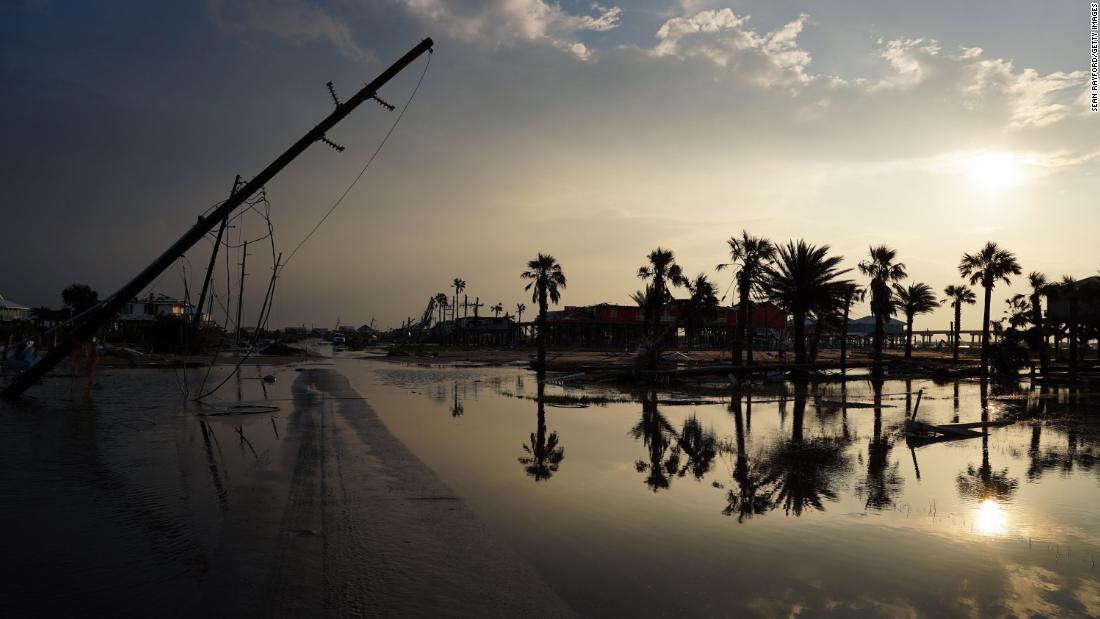It could be weeks before parts of Louisiana have power
“Electricity is one of the biggest challenges that we have across Southeast Louisiana. … There’s not an even rate of restoration going on, and that’s always going to be the case. I’m always happy to see people getting powered up, and some people are going to be quite a while,” Louisiana Gov. John Bel Edwards said Saturday.
The number of customers without power at midday Saturday was 718,559, which includes homes and businesses that equate “a lot more” people, Edwards said at a news conference in Livingston Parish. That’s down from a peak of 1.1 million customers who were without power immediately after Ida battered Louisiana.
Edwards said the electrical infrastructure needs reinforcement, but there are limitations.
“It is hard for me to imagine that we will ever have an electrical infrastructure — or other types of infrastructure as well — that can withstand a storm of this severity without any disruptions. But we know we can minimize those disruptions,” Edwards said.
Doing so, however, will require a large investment that will pay for itself over time, Edwards said.
“Especially when you consider that not just the severity of these weather events but the frequency of severe weather events is increasing,” he said. Louisiana has been hit by five hurricanes within 368 days, Edwards noted.
“We can’t continue to build things back to the current standard,” he said.
“In addition to the 24,308 distribution poles damaged or destroyed, 29,084 spans of wire down, and 5,742 failed transformers … we have identified 212 transmission structures that have been destroyed by Hurricane Ida, meaning they have to be completely rebuilt,” the utility said in a statement on its website.
The lack of power is so unbearable that New Orleans on Saturday began sending electricity-deprived people to powered shelters in northern Louisiana and Texas. The new shuttle program picks up people from the city convention center by charter bus.
“We’re doing everything we possibly can to speed relief to you,” Edwards said as he asked for patience from those affected by Ida.
Thirteen people died in Louisiana from the storm’s impact — four from carbon monoxide poisoning, said Edwards, urging people to be cautious when using generators.
“This is tasteless, it is odorless, and you don’t know it’s happening until it’s too late,” said Edwards, referring to carbon monoxide.
Gas in short supply as people wait hours to fill up
Lengthy lines began forming Saturday morning hours before a gas station opened in uptown New Orleans.
A day earlier, Eric Mertz said, he drove 20 miles from his home in neighboring St. Charles Parish to wait for gas outside a New Orleans gas station, where he believed the lines were shorter than they were near his home.
Still, he waited for hours.
“I’m just wondering where the help is,” Mertz said Friday. “I don’t have air conditioning. No lights. I had Covid last year. I was in the ICU for 14 days, and I’m on oxygen (treatments now). And I don’t have no electricity — it’s rough.”
Many gas stations are not working or don’t have fuel — and those that do have people waiting outside them for hours. Many want gas to fuel their vehicles — some to drive out of the region, and some just to use their cars as air-conditioned places to rest. Others want to fuel their at-home generators to keep electricity going.
In one instance, a feud over gas became fatal when a man waiting for gas Friday was shot and killed, apparently after confronting a man who cut the line at a gas station in Metairie, Jefferson Parish Sheriff Joseph Lopinto said.
A suspect turned himself in Friday night, Lopinto said at a news briefing Saturday. He claimed self-defense, “which doesn’t match up any of the witness testimony,” the sheriff said.
Preliminary information indicates the suspect bypassed the gas line “and was confronted by the person that he cut,” Lopinto said. The suspect went back to his car, retrieved a gun and fatally shot the victim, Lopinto added.
The sheriff urged patience at the pumps.
“(We don’t) have enough policemen out there on the street to … sit in every single gas station to play babysitter,” he said. “We … need people to act like adults.”
‘Not a neighborhood that’s been spared,’ local official says
Specifically, the communities of Metairie and Kenner experienced widespread destruction, he said.
“We got wind damage everywhere,” Impastato said. “There’s not a neighborhood that’s been spared, there’s not a street that’s been spared, there’s not a neighborhood that doesn’t have a massive amount of split power pole.”
A boil water advisory in the parish stems from the power outages, he said. Impastato estimated that about 80% of the damaged houses are relatively habitable in Jefferson.
“That’s going to speed up that recovery (and) make it very manageable to get back to where we were,” Impastato said.
Meanwhile, officials in Terrebonne Parish are asking residents to limit water usage because of power outages in the parish’s sewage system.
CNN’s Adrienne Broaddus, Kay Jones, Melissa Alonso, Jason Hanna, Travis Caldwell and John Bonifield contributed to this report.
![]()


